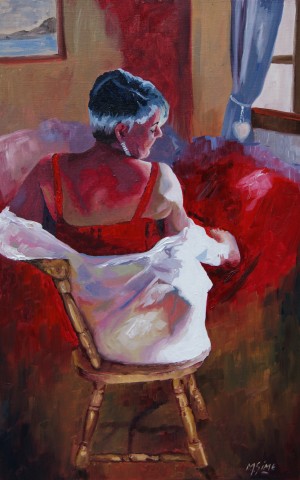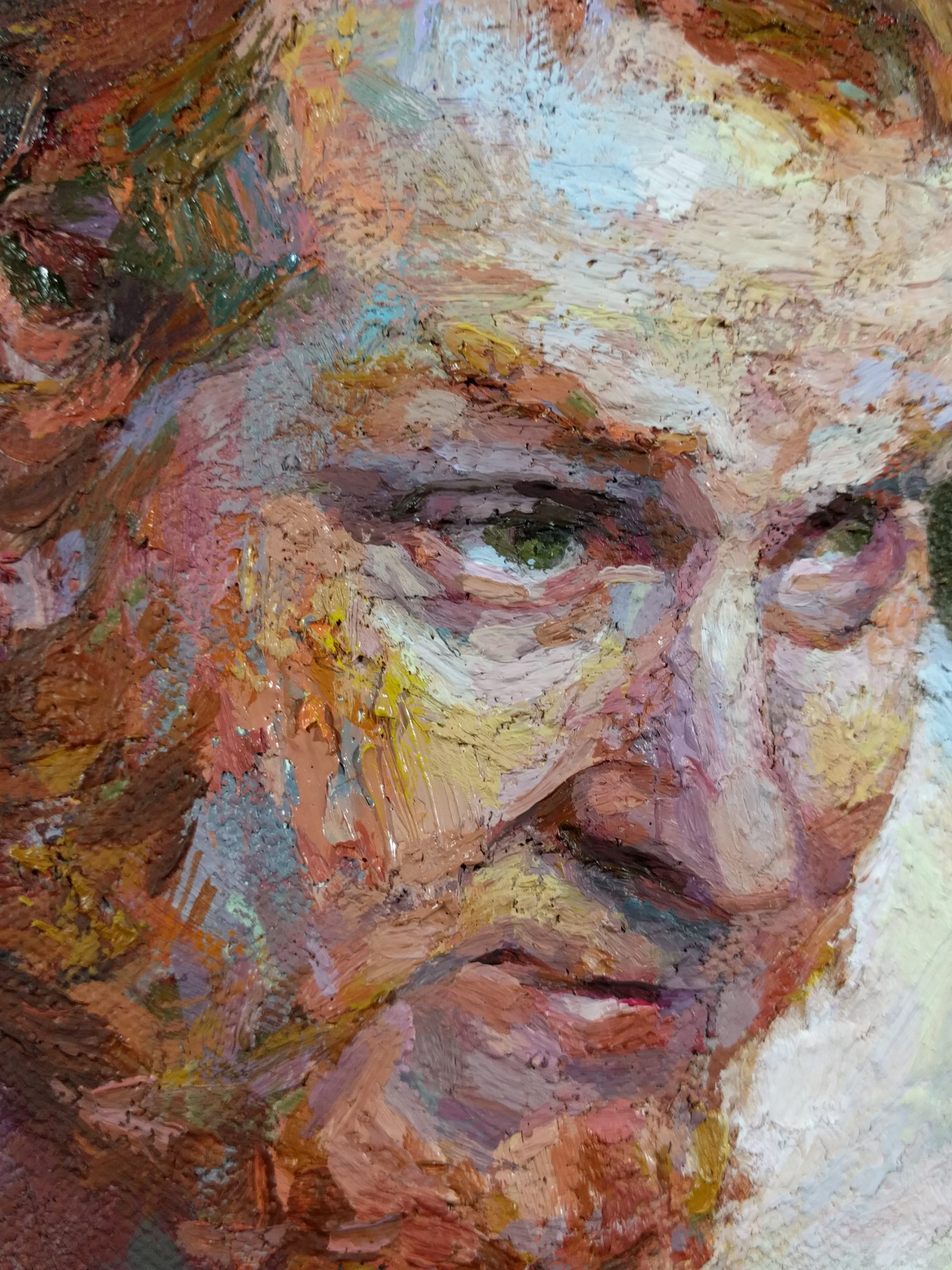Understanding Composition and Color in Figurative Oil Painting
Understanding Composition and Color in Figurative Oil Painting
Blog Article
The Function of Feeling and Expression in Figurative Oil Painting: An In-Depth Evaluation of Topic and Composition
The interplay of feeling and expression in metaphorical oil paint acts as a critical lens whereby one can check out the complex connection between topic and make-up. Artists harness different strategies, from color selection to brushstroke characteristics, to cultivate psychological resonance within their jobs. This nuanced orchestration not just forms customer understanding but additionally welcomes a much deeper query into just how these elements integrate to reflect the complexities of human experience. As we explore this abundant surface, one need to consider exactly how specific instance research studies brighten the wider implications of these artistic options.
Understanding Emotion in Art
Emotion in art acts as a powerful channel for expression, allowing musicians to convey intricate feelings through their work. In metaphorical oil painting, this emotional deepness is often depicted through the representation of the human figure, catching the subtleties of human experience. The selection of subject, shade scheme, and brushwork all add to the psychological vibration of an item.
Artists frequently draw upon personal experiences, societal concerns, or universal motifs to stimulate sensations in the viewer. For example, a picture might mirror vulnerability, while a vibrant number in activity can symbolize flexibility or chaos. These psychological threads attach the visitor to the art work, fostering a dialogue that goes beyond the aesthetic tool.
Moreover, the interplay in between light and darkness can intensify psychological strength, leading the visitor's gaze and drawing focus to certain elements within the structure. Using structure in oil painting even more includes layers of complexity, inviting a tactile response that enhances the emotional experience. In general, comprehending emotion in art is important for valuing the nuances that characterize figurative oil painting, as it transforms simple representation into a profound expedition of the human problem.
Crucial Element of Structure
In the realm of figurative oil painting, the composition works as the underlying framework that organizes aesthetic elements and enhances the emotional narrative. Essential parts of make-up include equilibrium, contrast, prime focus, and rhythm, each contributing to the overall influence of the artwork.
Balance describes the distribution of aesthetic weight within the painting, which can be achieved via unbalanced or balanced setups. A well-balanced composition gives stability, enabling the audience to involve with the piece sympathetically - figurative oil painting. Contrast, on the other hand, includes comparing different components, such as light and dark or warm and trendy shades, to guide the customer's eye and stimulate emotional responses
The focal factor is vital, as it directs interest to the most substantial component of the paint, often highlighting the emotional core of the story. By masterfully incorporating these vital components, artists can craft emotionally powerful and compelling figurative oil paintings that mesmerize and engage their audience.
Subject and Its Effect
Topic plays an essential duty in metaphorical oil paint, as it not just acts as the structure for the story yet additionally forms the audience's analysis and emotional engagement with the artwork. The choice of subject matter-- be it a singular figure, a group dynamic, or a thematic representation-- straight influences the emotional atmosphere conveyed to the target market.

As an example, pictures frequently stimulate personal connections, exposing the complexities of human expression and personality, while scenes showing common tasks can create a feeling of belonging or nostalgia. In addition, the historical and social context of the topic enhances the visitor's understanding, motivating deeper representations on societal norms, worths, and the human problem.
Different subjects additionally generate differing degrees of engagement; a dramatic dispute depicted with numbers in stress may evoke feelings of stress and anxiety or compassion, while tranquil landscapes can invoke serenity and reflection. Ultimately, the effect of topic in metaphorical oil paint is extensive, as it acts as a channel for psychological resonance, directing the customer's action and analysis, and promoting a connection between the artwork and the onlooker. This interaction is vital for the effective interaction of the artist's intent.
Methods for Stimulating Sensations
The performance of figurative oil painting in communicating feelings is dramatically affected by the techniques utilized by the musician. One of one of the most crucial approaches is making use of shade theory, where the tactical choice of hues can evoke certain emotional responses. Warm colors, such as reds and oranges, commonly elicit sensations of interest or aggressiveness, while cooler tones like blues and eco-friendlies have a tendency to stimulate calmness or sadness.
Another important method is the control of light and shadow, called chiaroscuro. This method boosts the three-dimensionality of numbers, developing remarkable contrasts that can increase emotional depth. The placement of light can lead visitors' feelings, highlighting certain aspects of the structure.
Brushwork likewise plays a vital function; loose, expressive strokes can share power and spontaneity, whereas smoother methods might recommend harmony or precision. Furthermore, the setup of subjects within the composition can affect psychological impact. Close closeness can recommend intimacy, while range may suggest seclusion.
Inevitably, the mix of these strategies makes it possible for musicians to craft narratives that resonate with the audience, changing a simple aesthetic experience into an evocative emotional trip. - figurative oil painting

Situation Research Studies of Remarkable Works
Checking out noteworthy jobs of metaphorical oil paint reveals just how various methods are employed to evoke effective feelings. One excellent instance is Edvard Munch's "The Scream," where the distorted figure and swirling history share existential fear. Munch's use of shade-- deep blues and vibrant oranges-- escalates the emotional impact, showcasing just how combination selections can shape audience experience.
An additional significant work is Pablo Picasso's "Les Demoiselles d'Avignon." Here, fragmented kinds and bold brushstrokes mirror a turbulent psychological landscape, testing typical representations of the female number. Picasso's innovative make-up not just catches the customer's interest yet additionally welcomes consideration on styles of identity and sexuality.
Additionally, Frida Kahlo's "The 2 Fridas" go to this site provides a poignant exploration of duality and self-identity. The different numbers, linked by a shared heart, exemplify Kahlo's psychological deepness and personal narrative. figurative oil painting. Her precise interest to detail and symbolic components serve to engage audiences on a visceral degree
These situation research studies emphasize the useful source profound connection in between emotion and make-up in metaphorical oil painting, disclosing exactly how artists harness strategy to communicate complex sensations and narratives that resonate throughout time and culture.

Verdict
In final thought, the interaction of emotion and expression in metaphorical oil painting dramatically enhances the customer's experience and interpretation of the artwork. With a careful choice of topic and compositional techniques, artists convey profound stories that reverberate on both personal and global levels. The application of shade brushwork, theory, and chiaroscuro further magnifies psychological deepness, transforming each canvas right into an effective representation of the complexities of the human experience.
In figurative oil painting, this psychological depth is frequently depicted via the representation of the human figure, recording the subtleties of human experience.Moreover, the interplay between light and darkness can enhance emotional strength, assisting the visitor's stare and attracting focus to particular elements within the make-up. The use of structure in oil paint better adds layers of complexity, inviting a tactile reaction that improves the psychological experience.The focal factor is essential, as it guides interest to the most considerable part of the check my blog paint, commonly highlighting the psychological core of the story. Inevitably, the influence of subject matter in figurative oil painting is profound, as it serves as a conduit for psychological vibration, leading the visitor's feedback and analysis, and promoting a link between the artwork and the observer.
Report this page